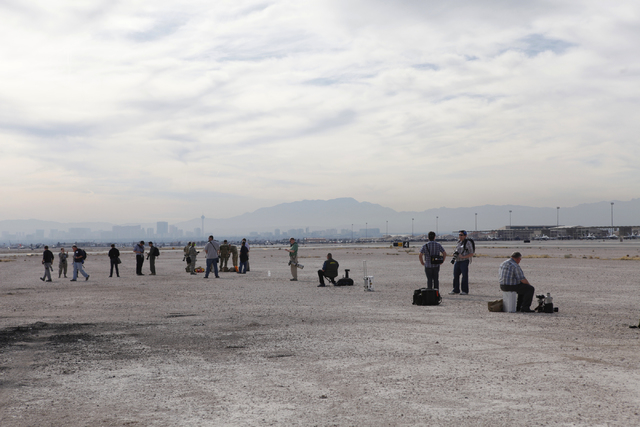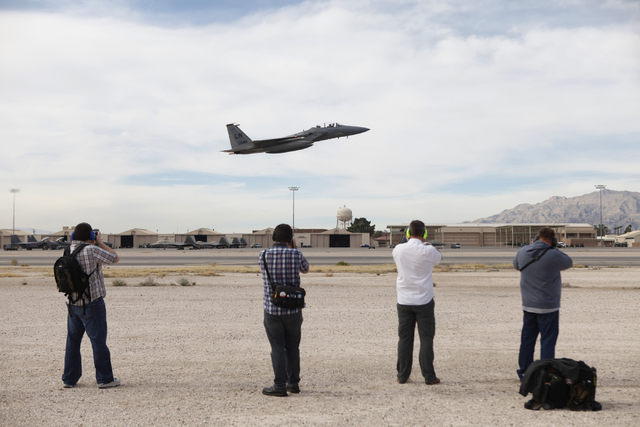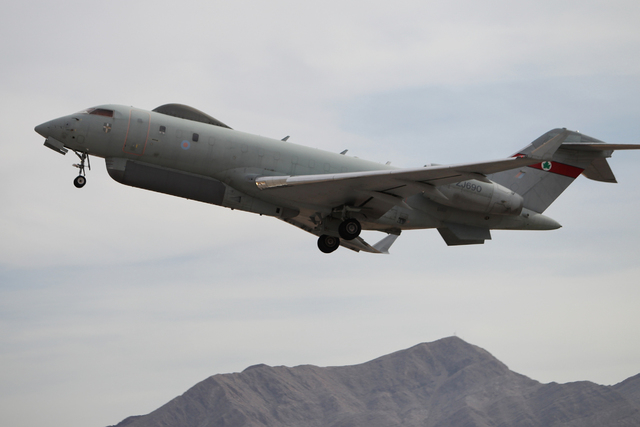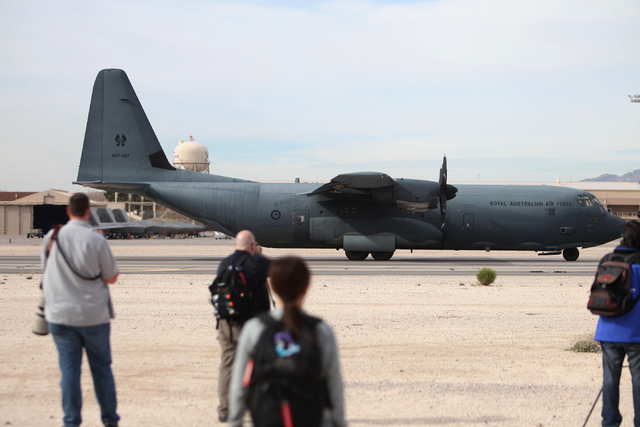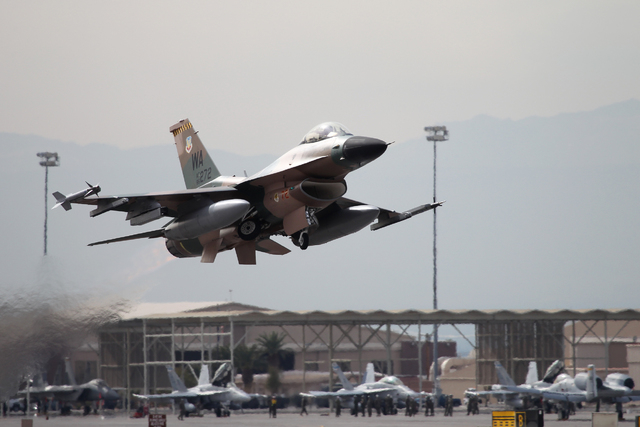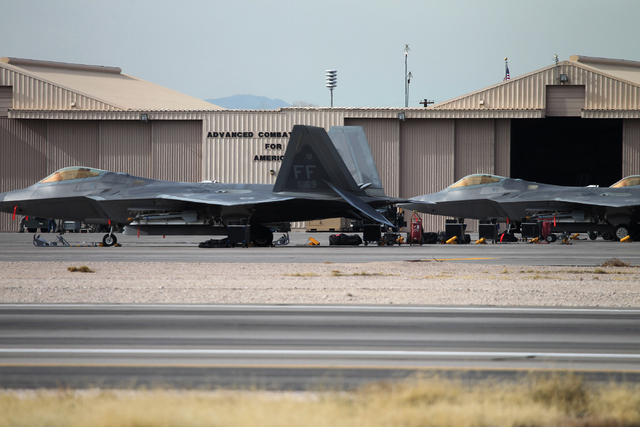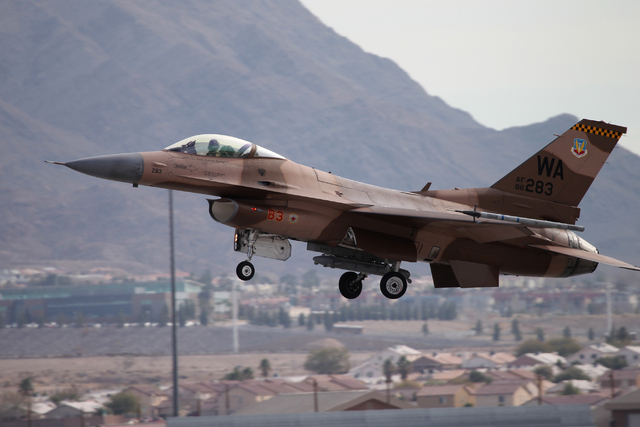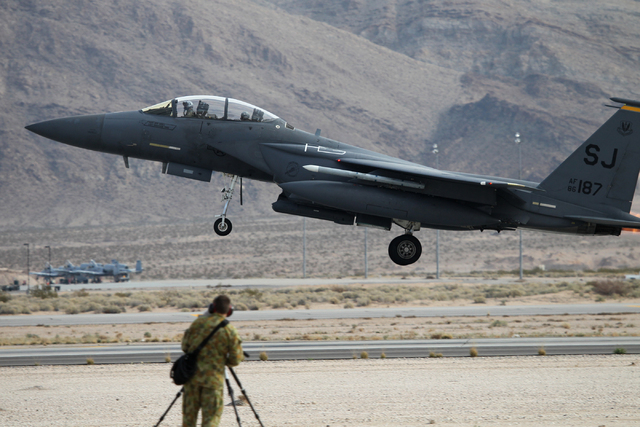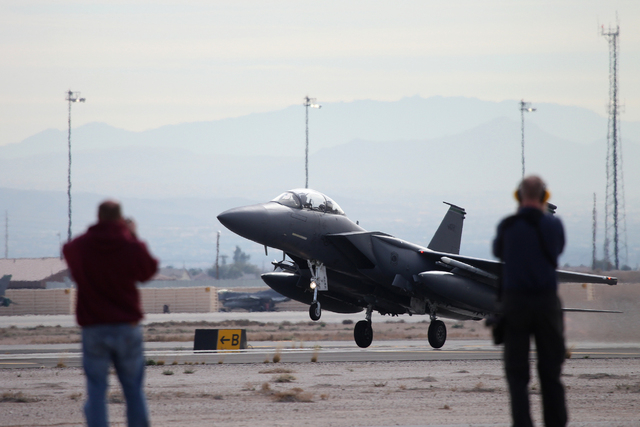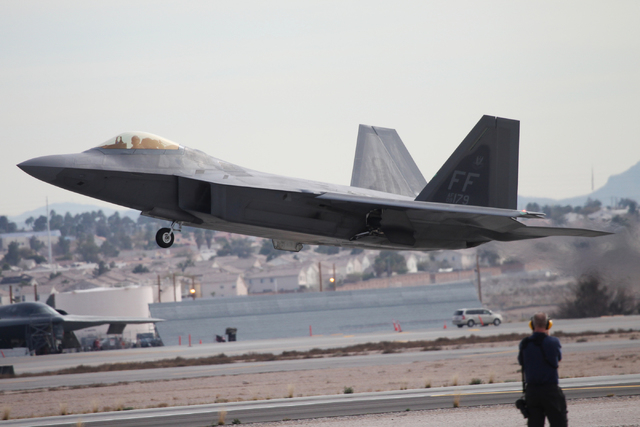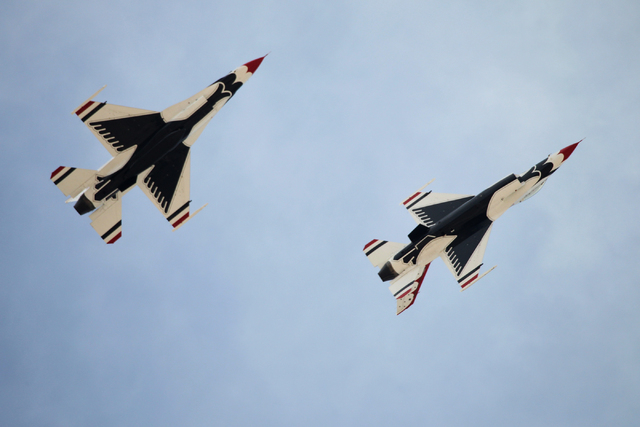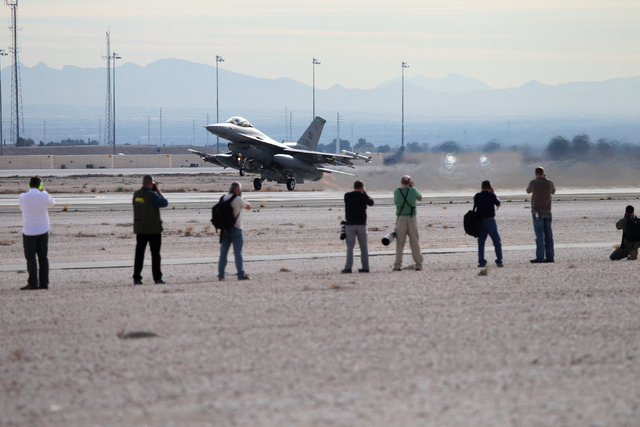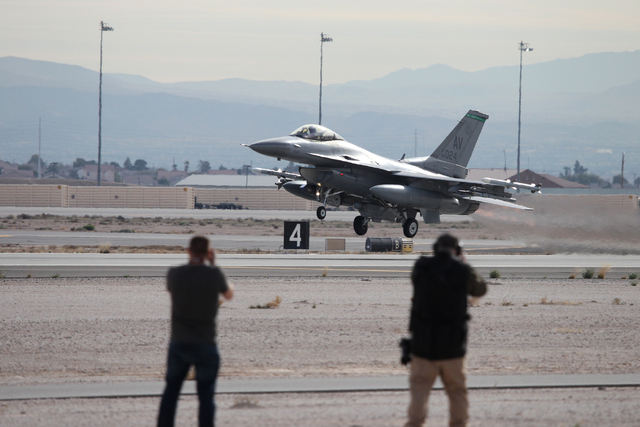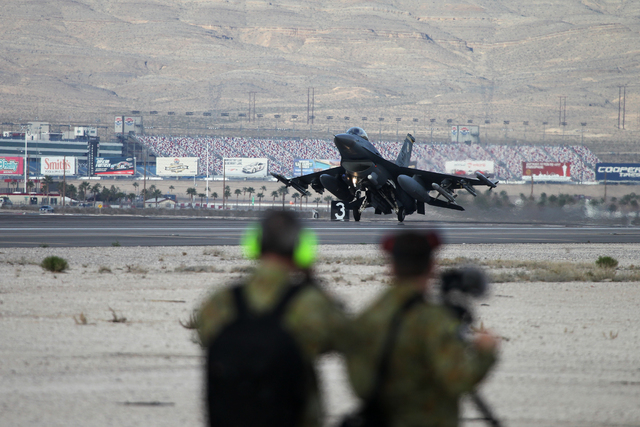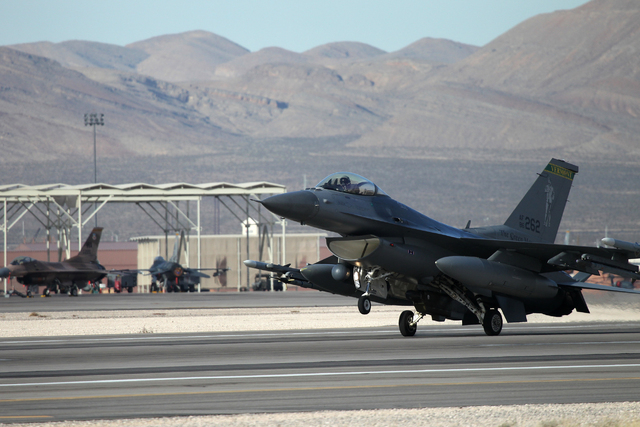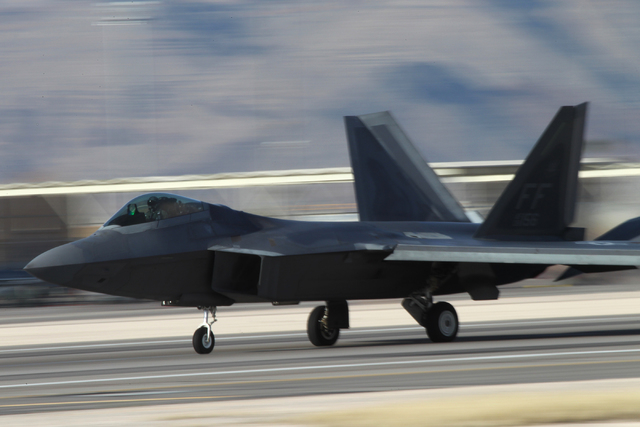Swarms of fighter jets mark 40 years of Red Flag at Nellis
A pair of B-2 Spirit stealth bombers followed by swarms of U.S. Air Force Raptors, Falcons, Eagles and Royal Air Force Typhoon fighter jets roared through the skies over Nellis Air Force Base on Tuesday.
They headed out for a historic Red Flag air combat exercise to mark 40 years since the base began hosting them at the end of the Vietnam War.
While officials declined to say how many F-22 Raptor air-superiority stealth jets are participating in this three-week session, about a dozen were seen on the ramp, making it one of the largest Raptor contingents for Red Flag training.
The combat-ready Raptors from the 1st Fighter Wing at Joint Base Langley-Eustis, Va., are flown by pilots from active-duty 1st Fighter Wing and the 192nd Wing of the Virginia Air National Guard.
Their presence is a noteworthy change in the four decades that the exercises have been held. The nature of war has evolved from F-4 Phantoms and F-105 Thunderchiefs battling Cold War-era MiG jets and dodging heat-seeking missiles to Air Force drones and high-tech stealth jets hunting down strongholds of enemy combatants and launching airstrikes against them. Although their focus is on the ground, they are still looking out for possible adversaries with radar-evading aircraft.
“I’m studying things that are real- world,” said 1st Lt. Paul Heins, deputy targets chief for the 547th Intelligence Squadron at Nellis, which compiles the Air Force’s threat and countertactics guide. “In our shop, we’re putting together the Lego pieces so that the guys and gals who come out here, they fight the war that they might be dealing with overseas.
“When Red Flag started in 1975, the bottom line was this: We want to get these folks through their first 10 combat sorties so that increased survivability goes up tenfold,” said Heins, 26, of Annapolis, Md.
“We’re looking at a war that’s not conventional right now that we’re currently involved in. So we’re bridging the gap and figuring out how we can have an environment where we have near-peer threats in terms of radars and air threats integrated with our ISR (intelligence, surveillance, reconnaissance) assets,” he said.
Capt. Brandon “Bloc” Bond, a B-2 pilot from Whiteman Air Force Base, Mo., said this is his first Red Flag. “It isn’t just about these other fighter aircraft in the air and the bombers. It’s like the non-kinetic effects that you can get through space, through cyber, through all these different facets that we’re learning are out there and that we actually might be able to use in the future and we’re using currently.
“So, for me that’s really been eye-opening,” Bond said. “Other than dropping bombs, there’s a lot of different ways to do things to effect change, and I think that’s what this Red Flag has really been useful for.”
U.S. Air Force Airman 1st Class John Elle Walker, from Royal Air Force Lakenheath, an F-15 station in the United Kingdom, said the “biggest thing” he’s learned about his first Red Flag is “integration, integration, integration.”
From the first week to the second week he said he has noticed “improvement from the way the information is being shared. Sometimes it won’t be how the tactic is that people beat us. Sometimes we beat ourselves by not sharing information and not communicating effectively.”
A Raptor maintenance technician, Tech Sgt. Guillermo Sacevo, agreed with Walker. “Integration is pretty much the key thing here, learning to work with everybody else.”
Darren Goldie, wing commander for Royal Australian Air Force C-130J Hercules planes, said the exercise is a valuable learning experience for the coalition force.
“It’s critical that we’re prepared to participate in operations and can mutually speak the same tactical language and apply the same tactics, techniques and procedures as our coalition partners.
“In terms of coalition partners, Australia, the U.K. and the United States are about as close as they come,” he said. “For us we’re a very technologically advanced air force but a small air force. … It’s a very important step in our understanding of how to best operate as a coalition.”
Spearheaded by Gen. Robert Dixon, who commanded the Tactical Air Command, Red Flag was established in 1975 for pilots to hone their skills and reverse the declining air-to-kill ratio trend that had fallen from about 10-to-1 during the Korean War to less than 2-to-1 during the Vietnam War.
Since its inception, airmen from 28 foreign countries have flown in the exercise, and several others have participated as observers. More than 440,000 U.S. military personnel, including 145,000 air crew members, have racked up 385,000 sorties and more than 660,000 hours of flying time, according a Nellis fact sheet.
This Red Flag exercise, the first of four planned for 2015, began Jan. 26 and is scheduled to run through Feb. 13. It is being conducted over the 2.9 million-acre Nevada Test and Training Range, which includes 15,000 square miles of airspace designated for military aircraft.
More than 125 aircraft depart Nellis twice a day and remain in flight for up to five hours before returning to the base.
This exercise includes U.S. fighter jets, bombers, reconnaissance planes, air-refueling tankers and air traffic control aircraft from 21 Air Force and Marine Corps squadrons in addition to aircraft from the Royal Australian Air Force and the Royal Air Force.



